Overview
Baltra
Mosquera
San Cristobal
Santa Fe
South Plaza
Santa Cruz
Española
Eden Islet
North Seymour
Our Eastern Galapagos cruise itinerary begins on Baltra Island, after which a short journey aboard the Santa Cruz II brings us to Mosquera Islet where we check out the sea lions before our sailing team heads to San Cristobal. A stop at the Cerro Colorado Tortoise Breeding Center will open our eyes to the beauty of the Galapagos giant tortoise and to the important scientific work that continues to be done on the islands. In the afternoon, we travel to the most eastern tip of the archipelago, Punta Pitt, the only stop on this journey where we can likely see red-footed boobies. From here, it’s on to the central islands, starting with Santa Fe, with its beautiful tranquil bay, before continuing to the wild cliffs of South Plaza Island with its alluring cacti, land iguanas, and stunning marine birds. The following day we visit the world-famous Charles Darwin Research Station on Santa Cruz Island. Then, Española Island, voted the #1 island by guides and expedition leaders, awaits with its remarkable visitor site of Punta Suarez, home to hundreds of marine iguanas, sea lions, marine birds, and even albatross (present between April and December) – making this a truly stunning site! In the afternoon, we enjoy the water at Gardner Bay. The following morning, we wake up at Eden Islet and finish the day at North Seymour, famous for its land iguanas and sea lions as well as bird colonies of blue-footed boobies, frigatebirds, and Nazca boobies. We finish back at Baltra Island after a moving and memorable experience of the Eastern Galapagos Islands.
Eastern Galapagos Highlights
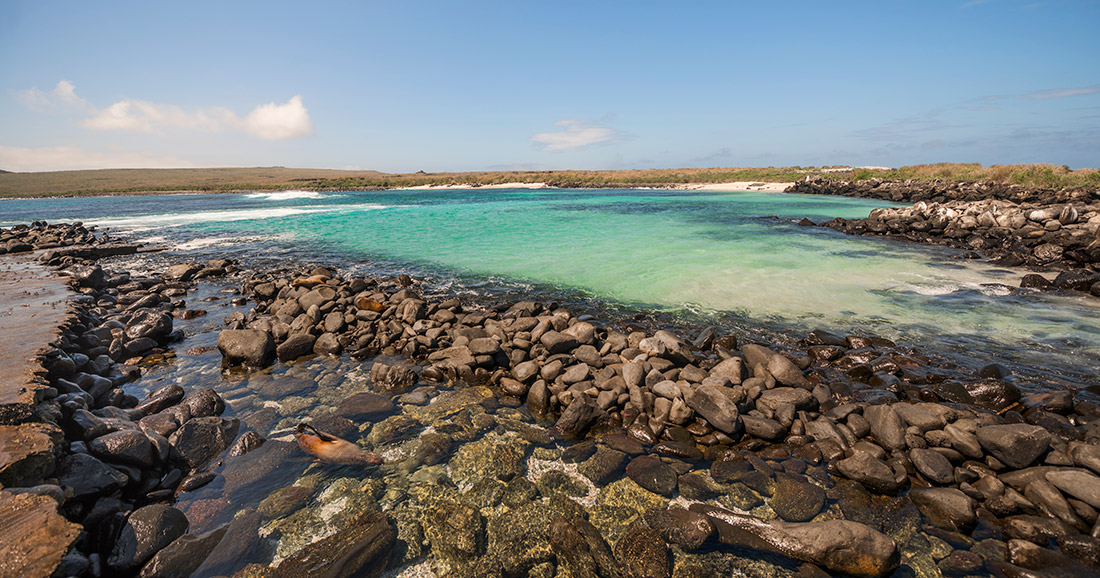
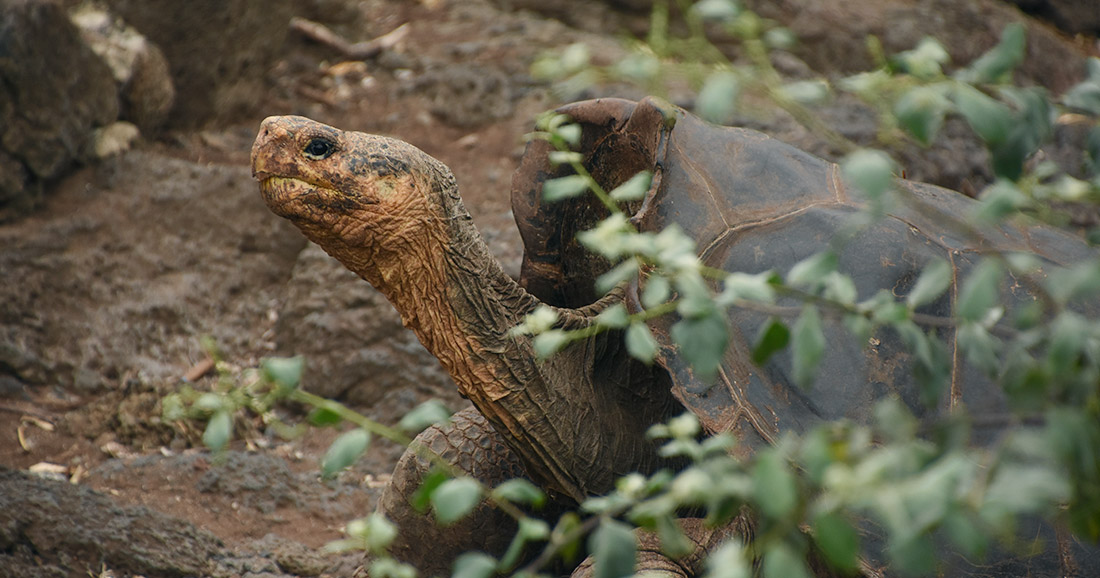
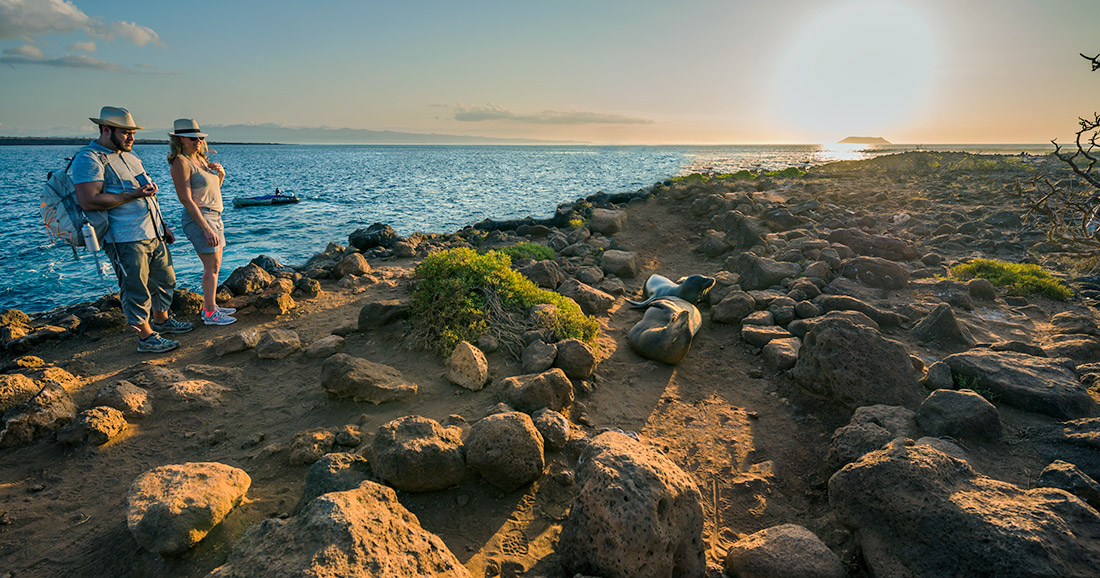
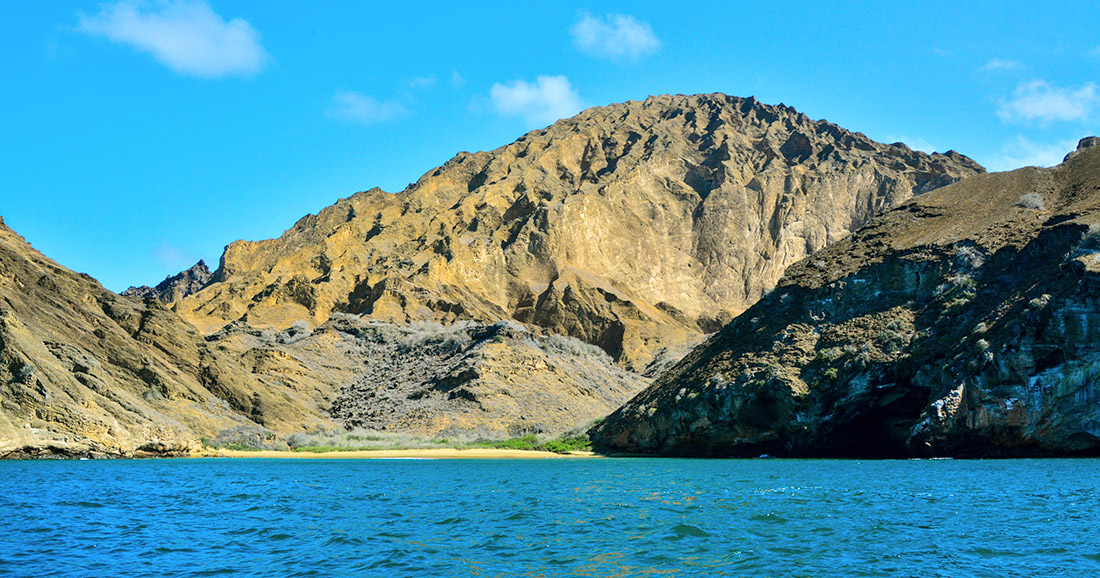
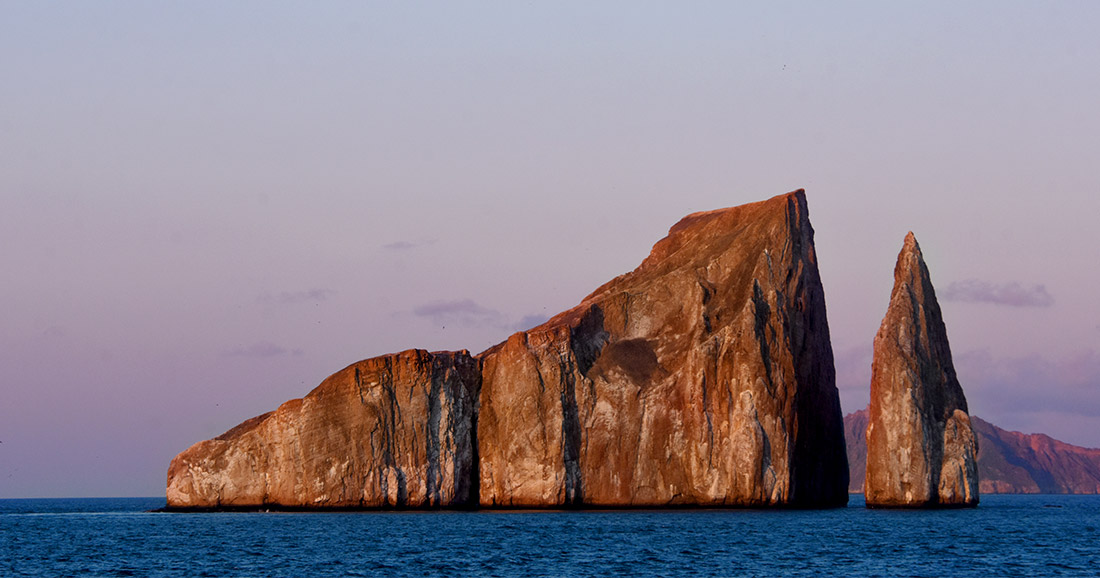
Eastern Galapagos Wildlife
Eastern Galapagos Travel Itinerary Map
Travel itinerary
Day 1 - Baltra and Mosquera Islet

Enjoy the company of friendly sea lions.
Baltra Island
You’ll arrive by plane to Baltra Island in the morning and then transfer to the dock to board the Santa Cruz II Galapagos Cruise. After an introductory briefing onboard, passengers take part in an emergency boat drill, receive their cabin assignments, and enjoy a satisfying lunch.
Mosquera Islet
After lunch, the Santa Cruz II will sail and relocate just four nautical miles away from Baltra Island, right beside Mosquera Islet– a small piece of volcanic uplift that sits between the larger islands of Baltra and North Seymour. Mosquera Island is a long and narrow sandbank that’s surrounded by lava reefs. The excursion group will approach the island from its western shore, which consists of a long shallow reef and acts as the perfect nook for young sea lions. After a wet landing, naturalist guides will lead you past the sea lion colonies, where you will get the chance to learn more about the fragile marine and terrestrial ecosystems of the Galapagos Islands. The walk is easy here, as it only involves walking across a few hundred meters of flat and sandy dunes.
Day 2 - San Cristobal Island

Encounter with a couple of blue-footed boobies and its chick.
Punta Pitt
In the morning, we disembark (wet landing) on the eastern tip of San Cristobal Island at Punta Pitt, which consists of an eroded tuff cone and a trail that provides spectacular views of the coastline. This is the only site in the Galapagos Islands where the three species of boobies can (most likely) be found together! You are more than welcome to enjoy the walk or a dinghy ride along the coast. Snorkeling, swimming, and kayaking activities are also offered here.
Puerto Baquerizo Moreno
After lunch, we disembark (dry landing) at Puerto Baquerizo Moreno, the Galapagos Islands’ capital, and take a 40-minute drive over to the island’s southern shore. At Cerro Colorado, we visit the Breeding Center for highly endangered Galapagos giant tortoises that amble around under the cover of a fantastic deciduous forest. This forest also happens to be home to dozens of bird species (including the San Cristobal mockingbird) and the San Cristobal lava lizard – both of which happen to be endemic species on this island!
Day 3 - Santa Fe & South Plaza Islands

The unique Santa Fe iguana.
Santa Fe Island
After breakfast, we take dinghies to over to this idyllic white sand beach (wet landing). This spot is home to plenty of sea lions. The endemic land iguana, which is exclusive to this island, may be spotted during the morning walk, typically sitting among the giant prickly pear cactus. Snorkeling and swimming from the dinghy rounds out this supremely rewarding experience. Alternatively, you can also opt to hop aboard the Santa Cruz II Galapagos cruise’s glass-bottom boat. Kayaking is also offered here.
South Plaza Island
Following lunch and a break, we disembark (dry landing) along the channel here, where turquoise waters contrast brilliantly with the white sand and the black lava shoreline. Nearby, a carpet of scarlet sesuvium succulents serves as groundcover for a grove of luminescent-green prickly-pear cactus. Yellow-grey land iguanas sit beneath these, waiting patiently for their prickly-pears to drop. Along the coastline, we will have the chance to spot sea lion colonies, all while frigatebirds, swallow-tailed gulls and shearwaters glide around, playing with the currents.
Day 4 - Santa Cruz Island

American flamingo spotted at Las Bachas.
Puerto Ayora & the Charles Darwin Research Station
In the morning, we disembark (dry landing) at Puerto Ayora to visit the Charles Darwin Research Station. The Station consists of a giant tortoise breeding center and an impressive giant prickly-pear cactus forest that is home to many land birds. The station also serves as headquarters for the administration of scientific investigation and conservation efforts in the Galapagos National Park. Following this visit, we board a private transport and head up to enjoy lunch in the cooler highlands of Santa Cruz Island, which is an entirely different ecosystem.
Highlands
You will have several options to choose from in the afternoon, these of which can be discussed in advance with your Expedition Leader. At the end of the afternoon’s activities, guests will return to Puerto Ayora and hop aboard the Santa Cruz II Galapagos Cruise.
Day 5 - Española Island

Encounter with a Galapagos albatross.
Punta Suarez
An exciting walk awaits at this site, where you can be sure to enjoy the unique variety of sea bird colonies present. Galapagos albatross (present between April-December), Nazca boobies, blue-footed boobies, and swallow-tailed gulls are all present here. Guests will also get to experience the Galapagos’ famous “blowhole” geological phenomenon. Red-green-black marine iguanas are also present here. Afterward, guests head back on board for lunch.
Gardner Bay & Osborn Islet
In the afternoon, the postcard-worthy coral beach of Gardner Bay and the nearby Osborn Islet provide a beautiful setting for observing sea lions, mockingbirds, and finches as you take your time to simply relax or take a dip in the water for some excellent snorkeling. Kayaking activities are available here too.
Day 6 - Santa Cruz & North Seymour Islands

Snorkeling with the unique marine life of Galapagos.
Eden Islet (Santa Cruz Island)
After breakfast, a panga ride takes us over to Eden Islet – a small islet located off the coast of Santa Cruz Island. It is here that we can observe blue-footed boobies diving into the water, reef sharks swimming around, and frigatebirds flapping about. There’s a chance to snorkel and, weather permitting, take a ride aboard the glass-bottom boat or do some kayaking.
North Seymour Island
North Seymour is the result of oceanic uplift that resulted from a volcanic event long ago. Its origins as a seabed give the island its low, flat profile. A tiny forest of silver-grey Palo Santo trees stands just above the landing site (dry landing). These trees are typically leafless, remain dormant for half of the year and spend most of their time waiting for the rains as their cue to burst into bloom. This is a great site to watch as bird colonies of blue-footed boobies, two species of frigatebirds, and swallow-tailed gulls all fly around. We also get the chance to observe sea lions and marine iguanas up close.
Day 7 - Baltra Island

Baltra Island
On the last day, you’ll disembark at Baltra Island, take the transfer to the airport, and hop aboard your flight back to the continent.
Enquire
